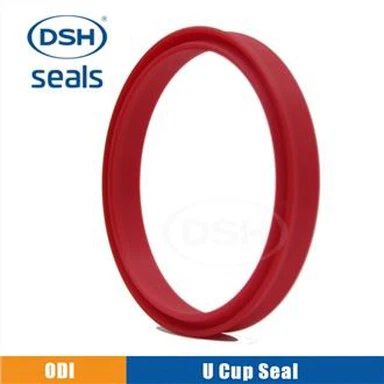Industrial Rubber (NBR) Gasket Seal Products
Apr 21, 2022
Gasket seal products made of rubber (NBR) are suitable for sealing media such as water, sea water, air, inert gas, alkaline and saline aqueous solutions, but are not resistant to mineral oil and non-polar solvents. The long-term use temperature cannot exceed 90 °C, and the low temperature resistance is very good, and it can be used in a working environment of -60 °C.
The gasket seal made of nitrile rubber is suitable for petroleum products, such as petroleum, lubricating oil, fuel oil, etc. The long-term use temperature can be around 120 ℃, such as 150 ℃ in hot oil, and the low temperature is -10~- around 20°C.
Neoprene rubber gasket seal is suitable for seawater, weak acid, weak alkali, salt solution, excellent oxygen resistance and anti-ozone aging performance, oil resistance is inferior to nitrile rubber but better than other general rubber materials, and the long-term use temperature is lower than 90℃, the high temperature does not exceed 130℃, and the low temperature use range is -30~-50℃.
There are many varieties of fluororubber gasket seals, which have good acid resistance, oxidation resistance, oil resistance and solvent resistance respectively. It can be used in almost all acidic sealing media as well as some oils and solvents, and the temperature for long-term use is below 200 °C.
Rubber sheets are used as flange sealing gaskets and are mostly used for pipelines or manholes and hand holes that are often dismantled. The pressure does not exceed 1.568MPa. Among all kinds of sealing gaskets, rubber gaskets are soft and have good fitting performance, and can play a sealing effect with a small preload. Because of this, when subjected to internal pressure, the gasket is easy to be squeezed out due to its thick or low hardness.
The use of rubber sheets in solvents such as benzene, ketone, and ether is prone to swelling, weight gain, softening, and stickiness, resulting in seal failure. Generally, the swelling degree exceeds 30% and cannot be used.
In the case of low pressure (especially below 0.6MPa) and vacuum, it is more appropriate to use rubber pads. As a gasket seal, rubber material has good compactness and low air permeability. For example, fluororubber is suitable for sealing gaskets of vacuum containers. The vacuum degree can be as high as 1.3×10*7MPa. When the rubber gasket seal is used in the vacuum range of 10*1~10*7MPa, it needs to be baked and exhausted.
The asbestos rubber sheet is lower than other gaskets and is easy to use; the big problem is that although rubber and some fillers are added to the gasket seal material, it is still unable to completely fill the tiny pores that are colluding, and there is a small amount of penetration. Therefore, in a highly polluting medium, it cannot be used even if the pressure and temperature are not high. When used in some high-temperature oil media, usually in the later period of use, due to the carbonization of rubber and filler, the strength is reduced, and the material becomes loose, which will cause penetration in the interface and inside the gasket seal product, resulting in coking and smoking. In addition, the asbestos rubber sheet is easy to bond to the flange sealing surface at high temperature, which brings a lot of trouble to the replacement of gasket seal products.







